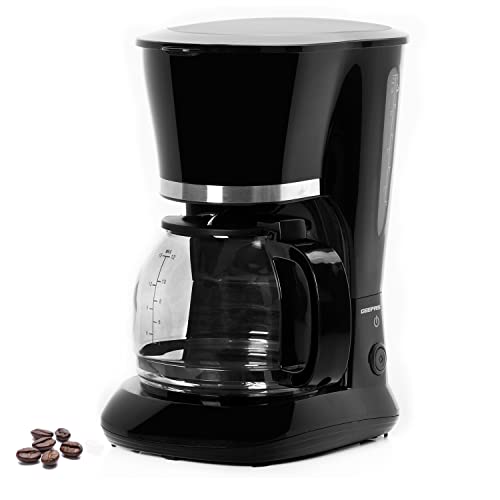Fixing a Drip Coffee Maker
If water is leaking out of the safety valve It's time to repair the leak. The good news is that it's probably fixable.
We'll also explore the different ways to make a great cup of coffee with a drip machine and how you can keep your coffee maker for longer.
1. Carafe Leaks
Pouring hot water on ground coffee beans, and allowing it to seep while storing the coffee in vessels such as carafe. It can be brewed in different ways with various terms used to describe the coffee brewed, based on the method used and the equipment employed. Some common methods are called pour-over, French drip, and automatic drip.
A drip coffee maker is an excellent method to get your morning coffee without having to wait in line at a café or for the coffee to be brewed. However the convenience of these machines can be a problem if something goes wrong with them. One of the most common issues is that the coffee maker will drip when you pour. This can be a hassle and cause your coffee to be messy, but it could also cause burns to your hands or other surfaces.
It is the location of the coffee pot that can cause it to leak when you pour. Typically, the spout is at the back of the carafe near the water reservoir. This is due to the fact that there is not enough room in the front of the container to accommodate an extremely deep, easy-to-pour spout.
When Coffeee comes to liquids, they will flow where there is less pressure. This is the reason that some older drip coffee makers dribble when you pour.
There is an easy solution to this problem though. You can solve this issue by moving the spout to the front of the carafe. This may solve your dribbling issue and prevent you from having to clean your counters every morning.
Another factor that could be responsible for the dribbling could be the amount of coffee you put into the carafe. Two tablespoons of coffee for six ounces of water is the recommended ratio. But the density of your ground can change, so you might need to adjust the ratio. A kitchen scale can be an effective tool to keep track of the proportions of water and coffee and prevent over- or under-extraction.
2. Spout Leaks
If you've ever considered different drip coffee makers that are budget-friendly, you know that they come in a wide range of sizes and shapes. Some come with thermal carafes, while others do not. Some pour the water using rings with a tight spout while others use wider ones.
One thing that influences the way these machines distribute water is the small valve at the hose's end. This valve can get clogged with gunk and, when it is blocked, spout leaks are the result. It's simple to fix. Unplug the pot and pour the water into the sink. Unplug the valve and clean it.
3. Safety Valve Leaks
Bialetti pots are designed to function perfectly, no matter if you're in bed or stomping towards the kitchen to turn the switch. If you don't notice the gurgling sound or rumbling maybe it's time to investigate.
There's a gap in the bottom of the bucket, and an extension tube that connects to it. During the boiling process, this tube carries the water up to the drip area. There's a valve that is one-way in this tube which lets cold water flow back into the bucket, while forcing the bubbles of boiling water up to the coffee pot.
If you find that your coffee maker is releasing steam or pressure through the safety valve on a regular basis it could be that the valve is blocked and requires to be serviced or replaced. Place a bucket under the safety valve pipe and then push the lever up several times. (Use gloves as the water is hot). This could resolve the issue but if it does not, it might be time to contact an expert. This is a lengthy job because the valve has to be removed and disassembled.
4. Filter Leaks
The reservoir and filter form the heart of any drip coffee maker. The reservoir and filter are at the center of every drip coffee maker. It is important to follow the correct water usage guidelines, along with cleaning and maintenance practices during the brewing process. This will ensure that your coffee maker continues to perform at its best.
When you switch on your coffee maker then the reservoir's water is heated by the heating element with resistivity and the heat is radiated through a white tube that leads upwards from the reservoir's base. The hot water flows over the coffee grounds and begins to saturate them and release their flavors. As the hot water pours over the coffee, it picks up coffee oils that are released during roasting. These oils give coffee it's characteristic flavor and aroma.
The growth of mold can occur on wet coffee grounds if they are left out for too for too. To avoid this, it is recommended to store the wet coffee grounds in a manner that permits them to dry quicker (e.g. Hanging, apart from the coffee maker, propped up for air flow and so on. ).
If the grounds of coffee aren't the proper size for your drip coffee maker, they could block the flow of water or cause overflows. To avoid this, it is recommended to use one suitable-sized filter or paper for your drip coffee maker. It is also an excellent idea to play with the brew duration to find out what setting will give you the best flavor.

Regular cleaning and decaling are also essential for optimal performance. To remove the buildup of minerals, follow the manufacturer's instructions on how to clean and decal your machine. Use filtering or bottled drinking water instead of tap to improve the taste of your coffee.
